Unit 6: Final Major project
Proposal form:
Animation & Photography:
Early Animation
The art of animation has been around before the advent of film and photography with animation artifacts like the Zoetrope being one of the earliest with a lineage which stretches back 5000 years, the Zoetrope along with objects like the Phenakistoscopes are considered the key precursors or modern animation and stop-motion since utilization of multiple different drawings or frames to create the illusion of movement.The basic principle of animation is simple, instead of using lots of different frames for something that actually happens in real time as see in the case of traditional film, animation works by using lots of individual frames for objects that are being painstakingly moved, modified and manipulated frame by frame to emulate the effect of traditional film in impossible scenarios.
Early pioneers of film & Cell animation developed the techniques and principles for the art of the illusion of movement for creating engaging animations, one of the early principles was the relation between animation & action, whit an animation starting with anticipation for action, the action itself & the actions termination.
more frames doesn't always make better animation, it will be smooth animation however movement without purpose looks distracting
Principles of animation
12 key, key features of animation:
- staging
- timing
- anticipation
- straight ahead and pose to pose
- squash & stretch
- slow in & slow out
- secondary action
- follow through & overlapping action
- exaggeration
- arcs
- appeal
- solid drawings*
Staging: used for the planning of a scene for animation, staging is use to create an action which is unambiguous & applies to Acting, timing, camera angle and screen setup. In animation if you are staging a subject being a character or personality make sure it is recognisable, to do this one would use a strong action or pose which clearly communicates to a general audience the idea, attitude or mood of the character, you also would control where the attention of the audience is guided throughout any animation by timing each stage in a way in which major actions don't distract from each other, the effective use of differing zoom lengths and camera angles can also aid in creating effective forms of staging. When staging make sure the actions are presented clearly to avoid confusing and overwhelming a viewer, this mindset can be translated to background and set design for if there it an excess of detail it may start to compete with the action. To help in planning how an Animation is staged one could use Thumbnail sketches to act as a rough prototype and a blueprint for clarifying ideas for further storyboard development, thumbnailing can also plan for composition, initial timings & potential key frames to later expand on.
Timing: refers to the number of frames or exposures in an animated action, or instead timing of action can be the speed of an action. The difference in speed or the number of frames in an action can create different effects or perceived physics with the greater number of frames the slower the action will be, and fewer frames creates a faster action, knowing this animators can use timing to establish a character's personality, mood, emotions and reactions. Timing also contains a very important principle to consider, that being Spacing, spacing is the arrangement of in-between frames in proximity to key frames on an animation timeline, spacing is more clearly demonstrated in its use in the principle of slow in and slow out. As a principle, Timing is the foundation of one's animation that once mastered can be used to create expressive & engaging animations.
Anticipation: refers to the preparation for the action, where nuanced movements in an animated performance suggest the next action while also building a form of suspense or anticipation for viewers. Anticipation can be created in the use of subtle indicators yet is most effective when the preparation is made to be animated highly exaggerated for this creates a clear idea of the actions which are in turn far more impactful to an audience, anticipation can also be used as an emotional hook to intensify a scene suggesting movements with a particular movements preparing a viewing audience of a story moment while also making the animation greatly appealing and the performance far more believable.
Straight ahead and pose to pose: refers to the straight ahead method of animating as you go about creating each frame after the next in chronological order until the end of an action or sequence, pose to pose refers to the process of drawing keyframe for the start and termination of an action and filling in the in-between frames after the actions or scene has been mapped out. Pose to pose is more often than not used in traditional animation because it allows for the most control with a scene being keyed out before the meat of the animation is done so if there are any errors or problems in the animation it would only need a one or two frame adjustment, working backwards withe pose to pose also allows an animator decide where the action is going and the rout it takes in advance of the main bulk on in-between work which overall leads to a much smoother, consistent and confident animation. Straight ahead is used when creating unpredictable movements or when a media does not allow the option of editing a sequence if any errors occur, straight ahead works by animating with the flow of the action and evaluating it once finished and if there are major errors then its back to re-shooting or salvaging if you can.
Squash and stretch: is the principle of the way to convey physics in an animation, this refers to the forces that are applied to objects or subject where an animator must demonstrate the way speed and gravity affect objects of differing mass and constant volumes (vol doesn't change). When animating one must remember kinetic energy is demonstrated through stretch and the transfer of that energy after the speed is terminated is known as squash. The amount of squash and stretch changes with objects which have density in mass or are slow with low gravitational or kinetic energy are mostly depicted with less squash & stretch or bounce, objects are likely to squash & stretch more with increased amounts of kinetic or gravitational force applied. Size of the volume is for the most part is only affected by mass where larger volume objects could be low density and highly elastic while a small volume object could have a huge density and solid with very little reaction or bounce. The best way to learn more about the principle of squash and stretch is either to observable it in real life on a day to day bases or to research the science behind the physics and materials and experiment with the principle to see where it could be applied in animation.
Slow in & slow out: refers to how almost all movements start and end slowly, in other words easing into an action or motion only to ease out when the action finishes, without the easing of motion the movements would look mechanical making the overall atmosphere of the animation far less interesting or appealing. To achieve the easing in and out of motion an animator would increase the number of frames at the starting pose with a few spaced out frames before adding more frames at the next extreme pose or more frames at the termination of an action. When applying slow in and slow out animators use motion curve diagrams to plan and implement arcs and the placement of slow in and slow out frames on a timeline, Ease in and out can create effective and convincing smooth movement in limited animations. There are situations where not using slow in or out, mostly in comedic scenes when quick or snap movements are most effective though snap movements can also be used when finding the balance between speed and smooth movement.
secondary action: refers to actions with resulting reactions, this means that a primary action has more life from motion and actions that support and enhance the main action. Animators often use of simultaneous actions that complement the main action to created greater emphasis of the action or to subtly emphasize physical or emotional nuances. Similar to anticipation, secondary action can be used to help strengthen the portray the video of feeling and emotion though the nuanced actions within the animation.
Follow through and overlapping action: refers to having parts or extensions of a subject or character that drag or react to the movement of the character, these movement can change depending on the physics of the world portrayed in the animation. these principles are often associated with the termination part of an action, for "follow through" this refers to parts of an object or character that continues to move or react once a character main action has stopped, overlapping action instead refers to the general techniques for entire process of an extensions movement cycle from how it's begins to react after the subject has started its movement to how it is the last part to come to its resting point. When creating an overlapping action one must consider the physics of the extensions, the amount of drag given to the object also defines the object's mass, this can also be used to work out leading actions. overlapping action can also be used to break up an action for more fluid movement by offsetting the action and avoiding twinning, this all helps create a more believable performance.
Timing: refers to the number of frames or exposures in an animated action, or instead timing of action can be the speed of an action. The difference in speed or the number of frames in an action can create different effects or perceived physics with the greater number of frames the slower the action will be, and fewer frames creates a faster action, knowing this animators can use timing to establish a character's personality, mood, emotions and reactions. Timing also contains a very important principle to consider, that being Spacing, spacing is the arrangement of in-between frames in proximity to key frames on an animation timeline, spacing is more clearly demonstrated in its use in the principle of slow in and slow out. As a principle, Timing is the foundation of one's animation that once mastered can be used to create expressive & engaging animations.
Anticipation: refers to the preparation for the action, where nuanced movements in an animated performance suggest the next action while also building a form of suspense or anticipation for viewers. Anticipation can be created in the use of subtle indicators yet is most effective when the preparation is made to be animated highly exaggerated for this creates a clear idea of the actions which are in turn far more impactful to an audience, anticipation can also be used as an emotional hook to intensify a scene suggesting movements with a particular movements preparing a viewing audience of a story moment while also making the animation greatly appealing and the performance far more believable.
Straight ahead and pose to pose: refers to the straight ahead method of animating as you go about creating each frame after the next in chronological order until the end of an action or sequence, pose to pose refers to the process of drawing keyframe for the start and termination of an action and filling in the in-between frames after the actions or scene has been mapped out. Pose to pose is more often than not used in traditional animation because it allows for the most control with a scene being keyed out before the meat of the animation is done so if there are any errors or problems in the animation it would only need a one or two frame adjustment, working backwards withe pose to pose also allows an animator decide where the action is going and the rout it takes in advance of the main bulk on in-between work which overall leads to a much smoother, consistent and confident animation. Straight ahead is used when creating unpredictable movements or when a media does not allow the option of editing a sequence if any errors occur, straight ahead works by animating with the flow of the action and evaluating it once finished and if there are major errors then its back to re-shooting or salvaging if you can.
Squash and stretch: is the principle of the way to convey physics in an animation, this refers to the forces that are applied to objects or subject where an animator must demonstrate the way speed and gravity affect objects of differing mass and constant volumes (vol doesn't change). When animating one must remember kinetic energy is demonstrated through stretch and the transfer of that energy after the speed is terminated is known as squash. The amount of squash and stretch changes with objects which have density in mass or are slow with low gravitational or kinetic energy are mostly depicted with less squash & stretch or bounce, objects are likely to squash & stretch more with increased amounts of kinetic or gravitational force applied. Size of the volume is for the most part is only affected by mass where larger volume objects could be low density and highly elastic while a small volume object could have a huge density and solid with very little reaction or bounce. The best way to learn more about the principle of squash and stretch is either to observable it in real life on a day to day bases or to research the science behind the physics and materials and experiment with the principle to see where it could be applied in animation.
Slow in & slow out: refers to how almost all movements start and end slowly, in other words easing into an action or motion only to ease out when the action finishes, without the easing of motion the movements would look mechanical making the overall atmosphere of the animation far less interesting or appealing. To achieve the easing in and out of motion an animator would increase the number of frames at the starting pose with a few spaced out frames before adding more frames at the next extreme pose or more frames at the termination of an action. When applying slow in and slow out animators use motion curve diagrams to plan and implement arcs and the placement of slow in and slow out frames on a timeline, Ease in and out can create effective and convincing smooth movement in limited animations. There are situations where not using slow in or out, mostly in comedic scenes when quick or snap movements are most effective though snap movements can also be used when finding the balance between speed and smooth movement.
secondary action: refers to actions with resulting reactions, this means that a primary action has more life from motion and actions that support and enhance the main action. Animators often use of simultaneous actions that complement the main action to created greater emphasis of the action or to subtly emphasize physical or emotional nuances. Similar to anticipation, secondary action can be used to help strengthen the portray the video of feeling and emotion though the nuanced actions within the animation.
Follow through and overlapping action: refers to having parts or extensions of a subject or character that drag or react to the movement of the character, these movement can change depending on the physics of the world portrayed in the animation. these principles are often associated with the termination part of an action, for "follow through" this refers to parts of an object or character that continues to move or react once a character main action has stopped, overlapping action instead refers to the general techniques for entire process of an extensions movement cycle from how it's begins to react after the subject has started its movement to how it is the last part to come to its resting point. When creating an overlapping action one must consider the physics of the extensions, the amount of drag given to the object also defines the object's mass, this can also be used to work out leading actions. overlapping action can also be used to break up an action for more fluid movement by offsetting the action and avoiding twinning, this all helps create a more believable performance.
Exaggeration: is used to create clear action, expression or pose in an animation & enhance the mood of a scene, exaggeration takes a standard "stance/ performance" to the next level which creates greater impact on audiences, this movement is referred to as cartoony movement. To create such a pose one would start with a draft action then consider thought processes, physics & emotion when creating what to exaggerate in the follow up Actions. Exaggeration doesn't need to be realistic however the action just needs to seem real in the way action convinces an audience of the portrayed ideas. One must keep in mind that exaggeration does not mean that subjects or characters have to be more distorted or pushed instead it refers to clarity in a pose or convincing the idea.
Arcs: are used to create more natural flowing animation where as an animation without arcs looks stiff and mechanical, this is because movements and motions in nature usually don't have strait lines or mathematical position in movement. In nature most movement take a more circular path otherwise known as an Arc, to recreate this movement an animator would try to trace the curved trajectory of the arc in combination with timing and other associated principles to create more fluid and appealing movement. When planning an animation it is important to consider the fact that many movements contain multiple arcs where a simple motion can create highly complex arc patterns, it is important to remember that arcs are everywhere and the best way to learn arc patterns is to observe the in ones day to day life and see how they trace their paths.
Appeal: is the principle of making characters and design stand out which in turn creates a more believable or realistic viewer experience. Appeal is generated from all aspects of animation design especially for all characters and not just the main character or the key cast, appeal doesn't refer to attractive aesthetics along the lines of beauty or cuteness but instead refers to interesting dynamic designs which are believable. To create appeal in ones characters animators and artists use shape language where characters are designed with a diverse variety of shape variations or body shapes which punctuate a character's personality or adulterate physiology, this is used because when all characters have a clearly defined shape compared to the rest of the cast and can be identified by silhouette that is the hallmark of good character design. Another way to create appeal in ones characters is through playing around with proportions and pushing it further, this is done by exaggerating the components of a design which are most interesting the push the exaggeration of shape & proportions. Unlike in illustration and sculpting, its important for animators to keep a character reasonably simple to replicate while not over complicating design which can spoil appeal.
Solid (drawing): refers to the creation of objects and characters which have a clear 3-dimensional presence while also having a clearly defined Volume, Mass(weight) & Balance. When creating clarity in animation, in particularly 2-D traditional animation one must understand how to design a character in a way where you can visualize and draw a character from any angle other wise known as 3-dimensional drawing for instance when drawing with shapes lines must follow the surface contours instead of flat lines which break the illusion of shape and depth. When creating 3-D shapes an animator must avoid parallel lines, instead they must bend the shapes lines towards the vanishing point to avoid creating isometric flat shapes. When creating characters animators start with rough solid shapes comprising of spheres, cylinders and cubes to ensure a consistent proportions which could be compromised if instead flat shapes are used like circles, squares and rectangles. In Animation its important to have a clear understanding of space and location, to sell the illusion of a character or object interacting and existing in a space animators use Ground Grids to ground the characters and also place them to the required depth or point of view. To make a drawn character clearer an animator will use overlapping lines to make the subjects edges stand out instead of looking all on a flat plain, animators will also consider the clearness of a character's silhouette when creating a pose achieving clarity by ensuring negative space around points of definition or interest. Things for animation artists to avoid are parallel lines, curve vs curve, repeating similar shapes, complex vs complex and same size shapes or lines, instead of these an animator should use tapering lines, offset curves, shape variations, simple vs complex and size variations. Animators must also avoid symmetry unless it is otherwise deemed necessary, in animation symmetry otherwise known as twinning is usually avoided because it leads to mostly stiff and uninteresting poses which can be remedy by using artistic principles like S curve poses.
Stop-motion fundamentals & principles
stop-motion is the animation principle of straight ahead animation where objects are photographed as they're moved incrementally, to create the appearance of movement when those photographs are all put together and shown quickly.Stop-motion animation has existed as long as film itself, and is responsible for special effects, animations in their own right, and a variety of very well-known characters from King Kong to Wallace & Gromit.
The majority of per digital stop motion animations were captured on 16mm to 35mm film using fixed zoom lens, by using different lenses for varying focal lengths, without digital software to view or asses the progress of a shot stop-motion animators would carefully planned the animation and then go for it, the catch was that you had to wait to get the film processed to see the shot for the first time.
Modern stop-motion animations is achieved with digital cameras & specialized computer software for it allows for better quality control
go motion is a stop-motion animation technique used to create motion blur created by
3 frame video assist frame grabber; 3 concurrent frames at any one time, 2 stored and one live. (manual equivalent to modern computer software)
latex puppet making
stop-motion sub-genres:
Claymation/ plasticine animation
Brick films
whiteboard
time-laps
Cut-out
paper/ felt animation
strata-cut, a method of building an animated image into clay or plasticine, this is achieved by molding
Uses of stop-motion:
TV animation: shows channel logos
Advertising:
CGI assistance: Jurassic park
Live action: King Kong & Terminator. Ray Harryhausen Sinbad & Jason and the Argonauts, 2D animation Richard Williams who framed Roger rabbit
Gaming: animating game assets in stop-motion (monkey bones?)
the earliest form of traditional animation was displayed in the vic
Rotoscoping is a method of traditional animation invented by Max Fleischer in 1915
3D digital & 2D traditional have seen a large
The Free Creativity & accessibility of the modular building toy, with a great number of recognizable
3 frame video assist frame grabber; 3 concurrent frames at any one time, 2 stored and one live. (manual equivalent to modern computer software)
latex puppet making
stop-motion sub-genres:
Claymation/ plasticine animation
Brick films
whiteboard
time-laps
Cut-out
paper/ felt animation
strata-cut, a method of building an animated image into clay or plasticine, this is achieved by molding
Uses of stop-motion:
TV animation: shows channel logos
Advertising:
CGI assistance: Jurassic park
Live action: King Kong & Terminator. Ray Harryhausen Sinbad & Jason and the Argonauts, 2D animation Richard Williams who framed Roger rabbit
Gaming: animating game assets in stop-motion (monkey bones?)
Other Animation forms & genres:
Traditional 2D/ Cell Animation
Traditional or 2D cell animation is a
Rotoscoping is a method of traditional animation invented by Max Fleischer in 1915
Digital 2D/ Flash animation
3D/ CGI animation
3D digital & 2D traditional have seen a large
Brick Films:
The Free Creativity & accessibility of the modular building toy, with a great number of recognizable
Animation Studios:
Intro
Studio A: Aardman animation studio
Founded by Frost & David Sproxton
Aardman's Feature production process
| Storyboard animatic for "The Pirates, an adventure with scientists" |
Studio B: FilmFair television production and film studio
founded American animator Gus Jekel, a collaboration in the 1960's led Graham Clutterbuck to start a European office for FilmFair
Absorbed into DHX Media and Discovery Communications 1996
FilmFair animated productions:
The Wombles
Studio C: Laika
as the successor to Will Vinton studios, Laika
Studio D: Cosgrove Hall Films
Cosgrove Hall films was a UK based animation studio that operated in the latter half of the 20th century which was responsible for many of the best animations to come out of Post war Britain
first established 1976
the studio was finally absorbed by ITV making Cosgrove Hall Films defunct in 2009
Stop Motion productions:
The Wind in the Willows (1983 film)
Noddy's Toyland Adventures
The Sandman (1991 film)
Postman Pat
Lavender Castle (Gerry Anderson)
Non stop motion productions:
Danger Mouse
Count Duckula
The BFG (1989)
Notable animation directors & productions:
Tim Burton
BBC, producer Gordon Murray
Ray Harryhausen
Will Vinton
...
Trumpton
Stop-motion & Quality control:
Its necessary to document the idea down even in rough with 2 key methods with the text based script which describes scene and dialog while a script is used to visualize the setting & action, for a screenplay script comes first to establish dialog & character dynamics with storyboards being used as visualizer guidelines however in animation the visuals and premis take precedence so a storyboard would be used to pitch and plan an episode with a script being used for voice acting or taking priority in more dialogue heavy animations. Comic scripts & graphic novels are good resources for movies and animations for the "storyboard" has already be prepared but is important to consider that a script is important & that many comics and visual novels star of as as highly "descriptive" script.
In stop motion Lighting is integral, from basic illumination of a subject to dynamic lighting setups that emulating a variety of environments to improve the illusion or instead create effects that highlight details or set the mood and emotion of an animation. However lighting in stop-motion can be compromised by flickering which is alternating light levels throughout an animation, this is caused by either the use of natural light which alternates throughout the day or buy an animator wearing reflective clothing were white or brightly coloured clothing reflects light off the wearer onto the animation set polluting the light arrangement. The ways to deal with flicker and light pollution is to
Light, lighting equipment & studio light setups:
3 point lighting
soft vs hard light
Animation preparation & Management ...
In stop motion Lighting is integral, from basic illumination of a subject to dynamic lighting setups that emulating a variety of environments to improve the illusion or instead create effects that highlight details or set the mood and emotion of an animation. However lighting in stop-motion can be compromised by flickering which is alternating light levels throughout an animation, this is caused by either the use of natural light which alternates throughout the day or buy an animator wearing reflective clothing were white or brightly coloured clothing reflects light off the wearer onto the animation set polluting the light arrangement. The ways to deal with flicker and light pollution is to
Light, lighting equipment & studio light setups:
3 point lighting
soft vs hard light
Animation preparation & Management ...
tests/ prototype animation at 8 frames per second for gaging the effect of the action while saving on time , have basic animation at 16 fps & action or fast movements at 24fps, smoother animation starts around the 12fps to 16 fps and realistic movement is achieved at 24fps an up with a realistic max Frame count being 60Fps however going higher is an option.
Techniques writing for stories or screenplays
structures
narrative flow
The process I'm using for the development of my animation:
 |
| This an interpretation of how the Deming cycle can be used and these descriptions will be modified to reflect my experiences |
The Plan, Do, Check, Act: For my Animation
Planning .... what to plan for & how
checking ... process
Project Ideas & Inspirations:
Look into the memo's at the end of the project to see through posses and note taking...
Star Wars related Media:
tv, animation
books,
games,
| as a child this was my first experience of videogames, with the content and music sticking with me throughout the past 12 years, |
Fan made media:
Star war has a legendary fan following and with that comes a huge amount of fan mage content, I will focus on a few stand out brick films from influential animators from early to present YouTube,
Wintermoog,
emation, Ethan Wells
Blob studios
Fancy Pants
keshen8 AKA, Custard Productions
Minifig weapons
Personal studio environment:
For brainstorming, dictaphone, bullet point notes, draft storyboard, "music to animation"
^prototyping possible air/ space battle ... green screen & composite footage together^
...
The troops of focus I planned to use in animation alongside additional units
...
testing 2 main lights:
1 LED cool fill light
1 Tungsten warm spotlight
...
Lighting & Macro studio environments
...
White Balance
( Flash -to- tungsten white light)
Custom Kelvin settings (10000K warm -5000K- 2500K cool)
...
comparing Lenses
Depth of field, effective reach, stability, exposure variable, macro vs zoom (lens vs telephoto)
18-55mm
55-250mm
...
Effects of depth of field
from greatest to smallest aperture
...
Studio lighting setup
...
...
compositing test
 |
| the reflected light off the blue screen surface has reflected onto the subject ... on a second attempt I will look different background setups |
...
modifying compositing background
Compositing background removal
...
final edit MK1 : Photoshop
... using another software along the lines of sony vegas would be far better when making an animation
final edit MK1 : Photoshop
... using another software along the lines of sony vegas would be far better when making an animation
state what the narrative of your animation:
my final animation projectIdea overview: Operation Habakkuk - a lone clone Arc trooper has rondevu with a republic-operative to deliver a data disk, through the transaction the ARC trooper discuses the previously transpired events leading up to the transfer (from action stations to extraction) ... however it seems separatist/ CIS affiliates are still in pursuit.
Key events, chronological timeline
Arc trooper (Cape) & Agent Halafax
Master Eroth & Lieutenant Bradley Debrief
Animation timeline & thumbnails:
I used storyboard thumbnails to create
 |
| Thumbnails pg1: 1) 2) 3) 4) 5) 6) |
 |
| Thumbnails pg2: 1) 2) 3) 4) 5) 6) |
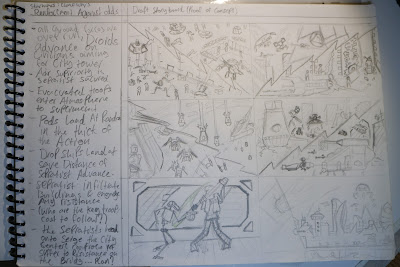 |
| Thumbnails pg3: 1) 2) 3) 4) 5) 6) |
Animation Scripting (script):
Considering dialog, when trying to consolidate my ideas I use a dictaphone to get my thoughts out, since the device picks up sound at a reasonable quality I planned to use the dictaphone to record a basic script prototype to use as a template for future voice over.
A photographic & Drawn Storyboard:
I used photographs to plan out a scene before animating it, when using photographs I can check the brightness levels, Composition, white balance & depth of field while also experimenting with the possibilities & variables to create the most effective image making.
examples;
More examples of this scene prototyping is present in Animation production
Equipment and Figurines:
Music:
HOME - ResonanceStar Wars themes - collection
lego star wars game 2005
captain scarlet (channel Intro)
sophomore make out
Software:
MonkeyJam: is a digital pencil test and stop motion animation program. It is designed to let you capture images from a webcam, camcorder, or scanner and assemble them as separate frames of an animation. You can also import images and sound files already on your computer.
Monkeyjam was also the software that powered the mid to late 2000's stop motion animation boom on youtube, as a free software it was easily accessible:
MonkeyJam Beta3.0b -05/29/05
==========================================================================
New Features and Fixes
==========================================================================
- current
-new features
Audio support for WAV and MP3 files.
Audio scrubbing in Xsheet and Preview.
Export AVI with audio.
Dialog markup in audio display.
Improved Scanner interface.
Better support for PAL resolutions.
Import images to new layer option.
Drawing duration change shortcuts (+/-,1-9).
New installer.
Option to re-name drawing in Xsheet and file on harddrive at same time.
Option in Xsheet to edit image in program of choice.
Full second preview in Stop Motion capture mode.
Full size image viewer in Xsheet.
Trailing letter allowed in number field (0023a) when using sequential capture.
Support for non-english translations (Latin-1 character set only).
-fixes
fixed error recognizing images with uppercase file extensions.
fixed Help link broken after opening file.
fixed Xsheet edit inconsistencies.
fixed intermittent Image numbering errors and capture freezes in Capture.
Many other bugs reported over the last year.
-known issues
Audio does not Print.
No undo for audio operations.
+ Google Drive
Dragon frame:
specifically dragonframe 4 is the most up to date version of the Dragonframe specialist stop motion animation software
Concept art & conceptualising with photographs
1) Location 1: natural landscape (grass lands)
 |
| background composition |
 |
| Mid/foreground cityscape composition |
Animation production:
documenting experience: (by scene)
...
...
...
Image 0334 & 0335 Glitched
separate segments of animation from survey & engaged ... Insert droid mobilisation animation
...
...
<< view >>
 |
| Frame 4 or 1 |
 |
| Frame 3 or 2 |
 |
| Frame 2 or 3 |
 |
| Frame 1 or 4 |
<< view >>
...
...
...
...
...
...
...
...
...
Post Production:
Organizing Hard drive on PC&Mac
transferring files on https://wetransfer.com/
photoshop C5
Monkeyjam
settings>image format>JPEG
file>import>images>select images>import
file>export AVI> select movie size>DV PAL
...
 |
| all animation scenes & segments |
Windows movie maker
When using windows movie maker I found it simple to add all the .AVI files into one continuous loop and also simple to ad sound
the problems were that I couldn't actually publish my movie files
Imovie
http://www.online-convert.com/
 |
| http://www.online-convert.com/ |
Editing process
the animation made in movie maker ended up being
the animation created in photoshop for the end of year show was the unpolished and incomplete version of the "battle of"
...
Final footage & end of year show:
pt:1
pt:2
(full)
^most complete version made using AVI's and movie maker^
Feedback:
during the end of year show I received a mostly positive reception to the Photoshop version (short version) of my FMP animation battle for Habbakuk
Gallery Report:
"History through a lens: iconic photographs from the incite project"
Bath gallery was hosting the photographic gallery "history through the lens" which showcased the photographic work of more than 75 Images that have changed public prescription of world events. The collection was selected from an specialist archive of photojournalism and documentary photography with the core majority of the images covering classic key events in 20th-century photojournalism.
...
 |
| when entering one is first greeted by a description of |
I found this gallery to be a fascinating and highly indulging yet sombering experience of world wide historic events through photographs & the medium of photography,
Unit Evaluation:
MEMOs
Read...ANIMATION Project notes
Start in march end beginning of may ... in that time I must explain my influences and research productions and the companies or key people behind them ... research animation ... practice animations techniques ... go through all phases of planning & preparing an animation ... create & animate final stop motion short film ... gow through post production ... gain feedback & evaluate your progress + review aspects for improvement going forward.
Make a video case study of stop motion animation (theory)
Create brief
follow animation process
animation test reel
look at how animators got to there present jobs and look int behind the scenes of projects
How has stopmotion evolved as a medium ... Per & Post digital & evolution in both periods
(look at equipment evolution of general animation ... eg' Rotoscope & storyboarding?)
DONT BE TOOO AMBITIOUS , simple premise ... look at creating character & emotive expression with animation (Experimental Arts or Cartoony fun)
characters before premice & ending before the start ... Develop your timelines wisely
http://www.dragonframe.com/productions.php
https://vimeo.com/watch
Equipment ... Floodlight/ light diffuser (soft box or Tracing Paper) + Spotlight + Reflectors two to three light setup + Reflectors (Tinfoil + use for animation) + custom white balance (REMEMBER)
change white balance ... make shots look clean & crisp ... use tungsten or Led white balance ... EXPERIMENT with Concepts
... Lighting ... I have 1to 3 warm fill lights ... one Cool LED fill & a warm Spotlight (All are household lights ... not professional) Make a folder to help you + make animation notebook reference guide & explain what I observe from different lighting setups!+ when using lego ... lock/ block light between the bricks.
<setting/ evening sun through the clouds/cold/rain (think coast)>
Facebook ... notepad:
<what is animation & how has each form developed>
<how have cameras been used in the field's of animation>
Look into art & artists that interest me ... Abstract? minimalist?
Analyse Animations frame by frame ... take influence & copy then experiment with your own concept of animation!
create movement tests ... for every movement ... create analysed and explained selection which work best & why?
... key subjects? the animation plots & how characters/ subjects react.
Essential for Monkeyjam ... free animation software.
https://www.youtube.com/watch?v=49De5wW0kk8
... Design you animation set in all aspects possible.
+ note to self, make a extensive list of animation & inspiring media
use of environment & motion in background
remember inspiration ... capture the essence of what aspects inspired you <!>
^ Take heed of the simplicity; for the set design ^
^ could work from the top ... make a document of inspiring links & explain why they inspire me ^
(how did squad 42 have such scale? was it the depth in each shot ... not claustrophobic & a fleashed out world/ city)
^ Give you animation a "large scale" to it with high stakes ^
Take inspiration ... no need to copy but you could take influence ... Create starship interias + green screen windows & Composite a City? (commentary on unfinished project) (City under threat ... small scale vs Large scale)
LOOK @ & DO ... create a poster of the city in haze of city ... tower in the sky ... Battle in the air ... What Sci-fi planets/ moon in sky + spaceships?
^expand on Ideas ... Work on a End & Start before digging int the meat of the Idea ... A lot of basic Ideas come to mind but cinematography compliments story ... just look at those images & create good or better versions and explain why^ (Prototype images below)
______________________________( FB notes <Memos> FB notes)___________________________________
... I will pay omarsh to the mid to late 2000's star wars animation fanbase ... Its for an animation trailer for an animation which could be out in 2Kmaybe?
... In final major project ... Include Ground skirmish ... Space Battle ... air combat ... AFV Combat & much more in a narrative with many theaters of war to protect a plant ... system the Harris & the Republic Colonist City of Habakkuk!
(Animation Premise Mk1) : farming world of Harris a green lush planet which hosted ancient battles of the old republic + the single capital city ... sudden separatist threat ... local republic forces & defence force Overwhelmed! ... a separatist sympathising county exists on the far side of harris ... so a small separatist presence already existed! <expand><explain><Plan><Prototype><implement>
... clone cruiser on ground; targeted & destroyed ... single cruiser in orbit; heavily damaged, sculpted & evacuated ... drop pods/ escape capsule and few gunships head to the surface landing inside & outside city limits ... Skirmishes are ensuing with ground air and space combat taking place; separatists have air superiority ... (why the attack ... is it the clone research facility & the new primary weapon upgrade for all clones ... or is there more?)
the boots on the ground ... mini stories ... theaters of war
... ^Civilians under attack/ threat ... bunkers being bombarded^ Jedi on planet ... what else could happen to bring out jedi? clone & local entrenchments against droids...
midway through, things could truly fall apart with the loss of major clone transports as support crews +a confrontation with agent of the separatists & a tease of the head of this operation + subtle hint of motive ... at the end the efforts of the final survivors are relieved by my new phase 2 clone .... the citizens that were sent to the bunkers when separatists gained air superiority to stop further evacuation attempts are welcomed out by clones of the 212th & 501st + jedi with a quick glimpse of the 41st dealing with the droids outside the walls of the city limits. (look at story curve to ease workload & streamline animation)
_________________________________________________________________________________
future projects:
<experimenting with differing mediums, techniques and use of sound><Animating 20 movie trailers><41st attack battalion ... operation endor! >< Post City of Bristol summer project/ product lego photography?>
__________________________________________________________________________________________________________________________________________________________________
Statement of intent
create a case study on animation, stop-motion & photography & explain my history with the subject
create an stop motion animation with a defined narrative
(The Animator's Survival Kit)
Create a number of shorter test animations, technique & Cinematography
Failed Ideas & Unfinished animations (portfolio of tests and experimentation)
Book of bullet point Ideas (memos)
seagate hard drive damaged on very last day, data needs retrieval
Bibliography:
...
...
http://beckyandjoes.com/tame-impala/
http://livlily.blogspot.co.uk/2011/05/flushed-away-2006-storyboards.html
http://monkeyjam.org/
http://www.online-convert.com/
timed to music?
https://www.youtube.com/watch?v=HRU4MXMKP8Q
self-reflective humor*
Delete after use:
Section 1
Working title:
Animating with Photography
What you will work towards producing:
Creating a collection of experimental stop-frame or stop-motion animations, the final goal being a 2 to 5 minute animation with cohesive narrative. This animation should demonstrate a wide variety of techniques and skills one would expect from a professional stop-motion animation production.
Section 2
Influences, starting points and contextual references:
From an early age I have enjoyed watching childrens' stop-motion programming, particularly British creative output, and grew up watching the works of Aardman, and of the directors Tim Burton and Ray Harryhausen. My interest in stop-motion bloomed in 2007 when I came across Lego brick films online. I quickly became fascinated by the way you could make Lego minifigures come to life when viewed in a sequence of images. I now want to become familiar with both basic and advanced techniques used in the art of stop-motion animation.
Early ideas, research and sources:
I plan to start with test animations evaluating different walk cycles and patterns of movement for different armatures and minifigures to discover personality and character in movement and to find out what works. This experimentation will allow me to create animations which convey a sense of weight using techniques for exhibiting a sense of extreme motion, and using a range of other techniques to convey or exaggerate realistic or smooth movement. This testing will not be done in isolation as I intend to research the work of both well known and amateur artists and review how such techniques have developed over time.
This activity will support my main research tasks which are to create, with a focus on British productions, a case study and timeline on the general history of stop-motion animation and its uses in tv programming and advertising, and also stop-motion animated features and the uses of stop-motion animation in movies.
My intention is to identify a selection of successful and influential uk based animators by reviewing the credits of traditional British TV. This will allow me to find out who were involved, how they personally progressed in animation and for me to gauge the national landscape of stop-motion animation and the animation industry. Following this I will expand my studies to include internationally renowned animators and animation studios and a cursory inclusion of interesting amateurs across the globe.
Section 3
Intended techniques, media processes:
The practical skills and techniques I will be using are: general camera operations; computer based image editing; understanding of cinematography; photographic shot composition; the exercising of my understanding of photograph and art knowledge and concepts which I have learnt from my course; understanding animation principles and how they translate into stop-motion; use of digital software for creating and processing stop-motion animation; craft skills for armature rigging and scenery construction; understanding lighting and studio based skills; an understanding of movie production and film editing; script creation and story boarding, and understanding how to apply narrative and literature based skills into a visual form.
Timescales:
Within three months, from the beginning of March until the end of May. During the first month I will focus on researching animation while applying practical skills to create a collection of test animations. By the end of March I will have drafted a script and story board for final animation. The month of April will be devoted to final animation production, keeping in mind that the filming of the final project take a long time to film, final month of May is assigned for editing and post-production work on the final animation.
Section 4
Proposed method of evaluation:
The proposed method of evaluation will be from student and audience feedback, and from comments posted by viewers of web streaming sites such as YouTube or Vimeo. Any form of viewer engagement or feedback will help gauge a consensus of how the final animation works as a piece of media.






























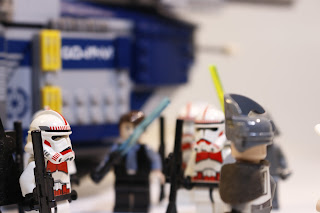
















































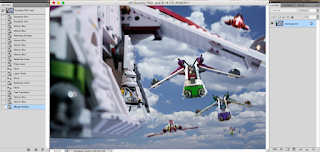





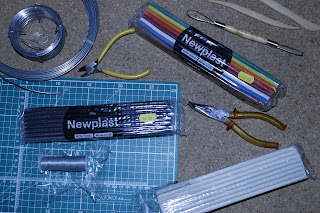

































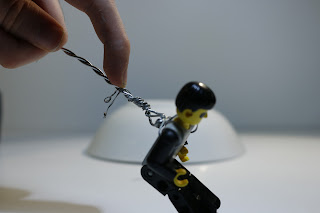





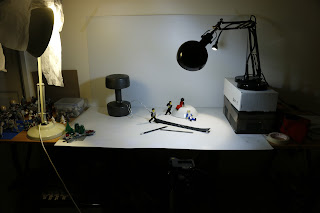






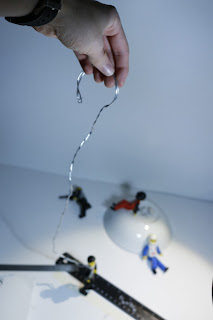






































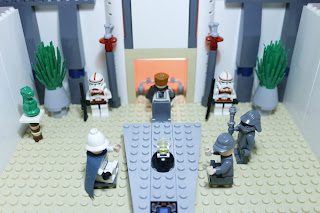



















































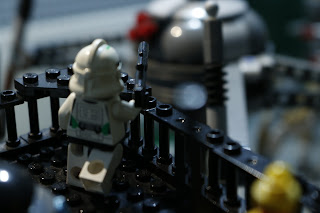






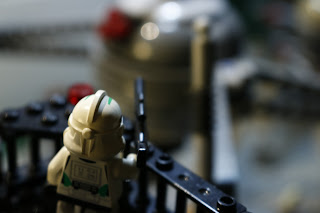


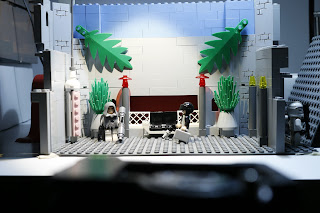






















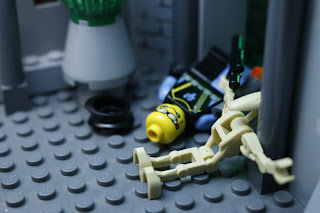




















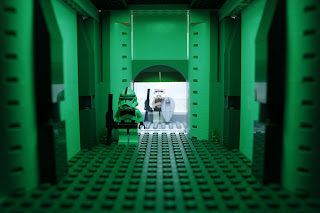










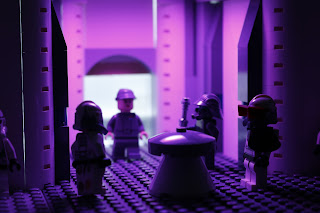













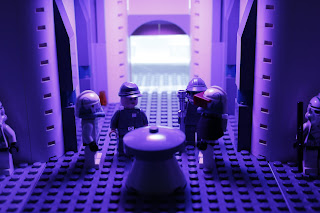






































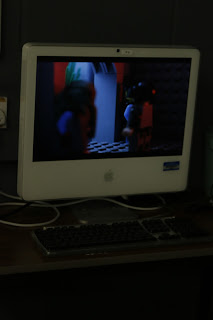






























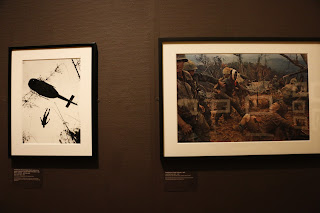


































































No comments:
Post a Comment